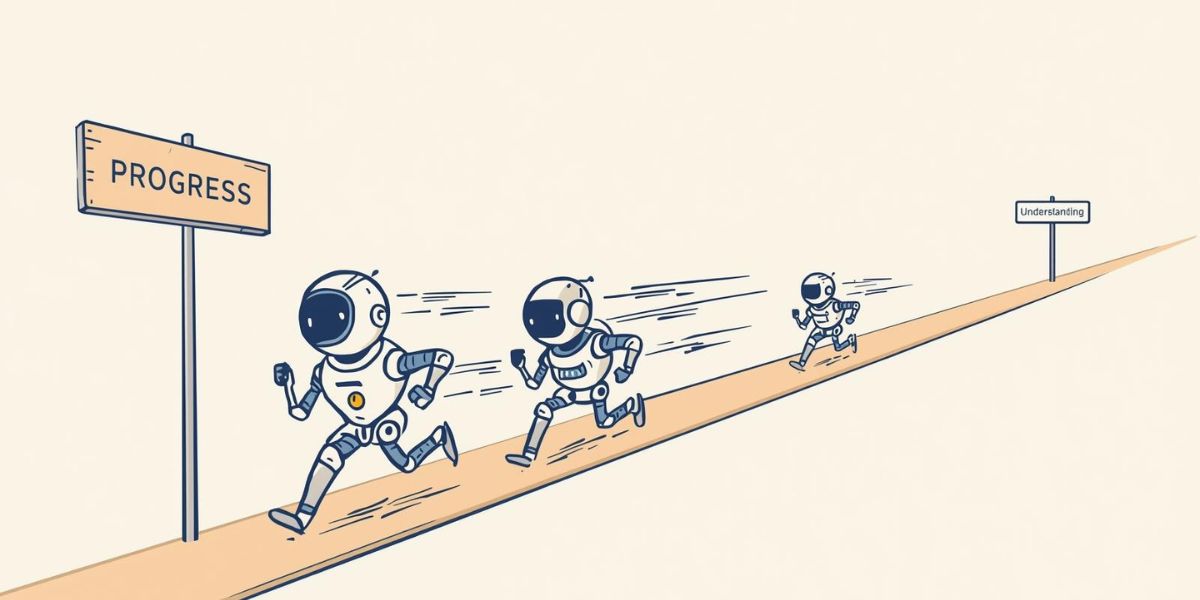The Evolution and Illusions of AI: Why Progress Isn’t Always Understanding
Artificial intelligence has evolved at a breathtaking pace. Each decade seems to bring a new revolution: symbolic reasoning in the 80s, neural networks in the 2000s, deep learning in the 2010s, and large language models today.
From the outside, it looks like a steady march toward real intelligence. But beneath that linear narrative lies something more complex, and more human.
AI isn’t just evolving. It’s recycling its illusions.
The Myth of Linear Progress
We love to tell stories of technological inevitability, that each generation of AI “builds on the last,” getting smarter, deeper, and closer to human cognition.
In truth, AI evolves in cycles of hype, disappointment, and rediscovery. The ideas change names, but not always the substance.
What we now call “agents” are descendants of expert systems. What we call “prompt engineering” echoes the design of symbolic rules. And the belief that scale alone will produce understanding, we’ve seen that before, in every era that mistook computation for cognition.
History repeats itself not because AI fails, but because we forget what it can’t yet do.
Complexity Without Comprehension
Each wave of AI adds layers of sophistication, more data, parameters, and compute. But complexity doesn’t automatically lead to comprehension.
A model with 10 trillion parameters can still be blind to meaning. It can describe a cat in a thousand ways, yet never know what it feels like to touch one.
Our systems get bigger, faster, and seemingly more “intelligent.” But their inner world remains flat, no curiosity, no memory of experience, no model of self.
The evolution we celebrate is often technical, not cognitive.
The Human Mirror
The irony is that AI’s biggest breakthroughs often tell us more about ourselves than about machines.
We’ve learned that human intelligence isn’t about raw data; it’s about context, intention, and interpretation.
It’s the ability to find meaning where data alone cannot.
When AI mimics our creativity or reasoning, what we’re really seeing is a reflection of the patterns we’ve already shared with it. We’re training machines on the collective output of our species, and mistaking the echo for a voice.
AI evolves because we keep feeding it ourselves.
The Illusion of Autonomy
Each new generation of models is marketed as “autonomous”, capable of independent action, decision-making, and even reasoning.
But autonomy requires something more than automation. It requires agency: an understanding of goals, values, and consequences. Today’s AI systems don’t have that. They follow instructions, not intentions. They pursue objectives, not meaning.
Their autonomy is a beautifully engineered illusion, a dance choreographed by human data, direction, and design.
Progress vs. Understanding
The danger isn’t that AI evolves too quickly; it’s that we confuse performance gains with understanding.
We celebrate benchmarks, demos, and viral conversations as signs of sentience. But those are just surface metrics, reflections of pattern mastery, not genuine insight. If we measure intelligence by output alone, we risk defining knowledge as noise that sounds coherent.
That’s not evolution, that’s simulation.
Toward Conscious Systems
The next leap in AI won’t come from bigger models or faster chips. It will come from systems that can build their own representations of the world, that learn through experience, and that remember why a choice was made.
True evolution will mean going beyond imitation, toward comprehension, intent, and perhaps one day, consciousness.
Until then, AI remains what it has always been: a mirror polished by progress, reflecting our brilliance, but not yet our understanding.



